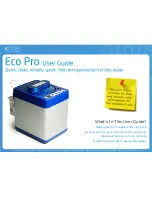
OWNER DETAILS
Name
Vessel
CONTACT
Tel.
BEACON REGISTRATION
!
It is the owner’s responsibility to register
this beacon with the appropriate National
Authority before operation.
Documentation is provided within the packaging with
information regarding registration with the relevant
body to comply with the required configuration of the
beacon.
ATTACH YOUR BEACON DETAILS HERE
Category 1
406MHz EPIRB
(With RLS)
6. Specifications
406MHz Transmitter
Transmit Power (EIRP)
12W
Frequency
406.031 MHz ±1KHz
Modulation
Phase ±1.1 Radians (16K0G1D)
Encoding
Biphase L
Rate
400 bps
121.5MHz Transmitter
Transmit Power (PERP)
50mW±3dB
Frequency
121.5 MHz
Modulation Duty Cycle
>35%
Modulation Factor
0.85 to1.00
Frequency Stability
±50ppm
Duty Cycle
>98%
Strobe and Night Vision Lights
Light Type
High Intensity LED & Infrared (IR)
Light Colour
White and IR
Average Intensity Visible
>1 candela
Average Intensity Night Vision Light
15mW/sr
Flash Rate
24 per minute (nom.)
Battery
Type
Lithium Iron Disulphide (LiFeS2)
Operating Time
>48Hours @ -20°C
Battery Replacement Period
10 years
GNSS Receiver
Satellite Channels
72 acquisition
Sensitivity
-167dBm
Cold Start / Re-acquisition
-148dBm / -160dBm
GNSS Antenna
Microstrip Patch
NFC Transmitter/Receiver
Operating Frequency
13.56 MHz
General
Dimensions of EPIRB (Inc. antenna)
410mm x 90mm x 101mm
(16.1 x 3.5 x 3.9 in.)
Weight
(EPIRB Only)
422grams (0.92lbs)
IEC60945 Category
Portable
Operating Temperature
Class 2 -20C to +55C
Storage Temperature
Class 2 -30C to +70C
Waterproof (EPIRB)
10m depth for 1 hour
Auto Release Depth
4m maximum
Expected Life (EPIRB and Bracket)
In excess of 10 years
EPIRB2 Pro
DOWNLOAD THE
FULL USER MANUAL
oceansignal.com/products/epirb2-pro
912S-04396 v01.00
03/05/2023
GET THE MOBILE
APP. TO SEE YOUR
BEACON’S TEST
INFORMATION
Android iOS
1.
ABOUT YOUR EPIRB
1.1
COSPAS/SARSAT System
The basic Cospas-Sarsat concept is illustrated in the
adjacent figure. The System is composed of:
•
distress radio beacons (ELTs for aviation
use, EPIRBs for maritime use, and PLBs for
personal use) which transmit signals during
distress situations
•
instruments on board satellites in geosta-
tionary and low-altitude Earth orbits which
detect the signals transmitted by distress
radio beacons
•
ground receiving stations, referred to as Local Users Terminals (LUTs), which receive and
process the satellite downlink signal to generate distress alerts
•
Mission Control Centers (MCCs) which receive alerts produced by LUTs and forward them to
Rescue Coordination Centers (RCCs), Search and Rescue Points Of Contacts (SPOCs) or other
MCCs
The Cospas-Sarsat System includes two types of satellites:
•
satellites in low-altitude Earth orbit (LEO) which form the LEOSAR System
•
satellites in geostationary Earth orbit (GEO) which form the GEOSAR System
The future Cospas-Sarsat System will include a new type of satellite in the medium-altitude Earth
orbit (MEO) which will form the MEOSAR System.
1.2
Return Link Service
The Galileo Return Link Service (RLS) is a free-of-charge global service available to Cospas-Sarsat
RLS compatible beacons. The new functionality, currently offered uniquely by Galileo, enables a
communication link that relays Return Link Messages (RLM) back to the originating beacon through
the Galileo Navigation Signal in Space.
The RLS feature is an indication on the EPIRB2 Pro that confirms to the User that the distress signal
from the EPIRB2 Pro has been localised by the Cospas-Sarsat system and is being sent to the
SAR authorities. It does NOT mean that a search and rescue mission has been launched, but only
confirms that the distress alert has been received by the Cospas-Sarsat system and is being routed
to the appropriate SAR agencies. The RLS aims to send an acknowledgment to the beacon within 30
minutes following activation (the response may not be received by the beacon for significantly longer).
RLS is an optional function and may not be permitted in all countries. The full RLS specification can
be found here: https://gsc-europa.eu/sites/default/files/sites/all/files/Galileo-SAR-SDD.pdf
IN CASE OF EMERGENCY
USE ONLY IN SITUATIONS OF GRAVE AND IMMINENT DANGER
MANUAL ACTIVATION
NOTE:
Remove the rubber lanyard cover and tie the lanyard to the life raft or your person
to prevent loss. DO NOT tie to a vessel that is in danger of sinking.
NOTE:
Once removed from the bracket the EPIRB2 will automatically activate when placed
in the water. To deactivate remove from the water.
Break off the tab
Press the button
Lift the flap
1
2
3
4
5
6
7
8
Pull the pin
Release the catch
Turn the knob
Remove the cover
Release the EPIRB



















